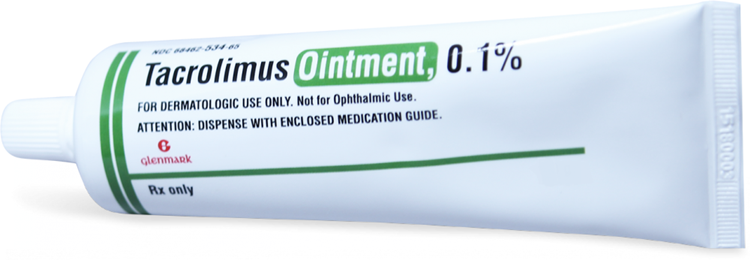Protopic, a brand name for Tacrolimus ointment, is a topical medication that has gained popularity for its ability to treat skin conditions like psoriasis and eczema. However, it has also generated significant interest because of its potential to promote skin lightening. This article explores the use of tacrolimus ointment in the context of skin lightening, shedding light on the scientific rationale, safety considerations, and possible side effects.
Understanding Tacrolimus Ointment
Tacrolimus is an immunosuppressive drug that belongs to a class of medications called calcineurin inhibitors. It works by managing the immune system’s functions and is commonly used to treat inflammatory skin conditions, especially atopic dermatitis (eczema) and other forms of dermatitis. Tacrolimus ointment is generally recommended for patients who do not respond well to, or cannot tolerate, other topical treatments.
Does Tacrolimus Ointment Lighten Skin?

No, Tacrolimus ointment does not lighten the skin. Tacrolimus ointment is not intended for skin lightening. It’s a medication used to treat inflammatory skin conditions like eczema, not to lighten the skin.
Skin Lightening: The Mechanism
The idea that tacrolimus ointment can lead to skin lightening is rooted in its anti-inflammatory properties. When the skin is inflamed, due to conditions such as eczema or psoriasis, it often appears red and discolored. Through its inflammation-reducing effects, tacrolimus can indirectly lead to the lightening of the skin. Here’s how it works:
- Melanin Regulation: Tacrolimus may have a direct or indirect impact on melanocytes, the cells responsible for melanin production. Even though the precise mechanism is not completely understood, it is believed that tacrolimus can suppress the activity of melanocytes, leading to a decrease in melanin production.
- Inflammation Reduction: Tacrolimus hinders the activation of immune cells and the release of inflammatory mediators. Inflammation can often trigger the overproduction of melanin, the pigment responsible for skin color. By reducing inflammation, tacrolimus can reduce the production of melanin, thus lightening the skin.
The Skin Lightening Debate
Although some individuals have reported skin lightening as a side effect of using tacrolimus ointment, it’s important to note that this effect is not the primary purpose of the medication. The skin lightening that occurs as a result of using tacrolimus is typically unintentional and a secondary consequence of the medication’s anti-inflammatory properties. In clinical trials and studies, the primary emphasis has been on assessing its effectiveness in treating skin conditions rather than its potential to lighten the skin.
Safety Concerns
The use of tacrolimus ointment for the purpose of skin lightening raises safety concerns. Tacrolimus is a powerful immunosuppressive medication, and its usage should always be under the guidance and supervision of a healthcare professional. Some key safety considerations include:
- Lack of Long-term Data: There is a limited amount of long-term data available regarding the application of tacrolimus for skin lightening. Prolonged usage of immunosuppressive medications should be carefully evaluated for potential risks.
- Potential Side Effects: Tacrolimus ointment may have side effects, ranging from minor skin irritation to more severe conditions. Those utilizing it for skin lightening purposes should be aware of these potential adverse reactions.
- Individual Variability: Skin responses to tacrolimus ointment can differ from one individual to another. What works for one individual may not produce the same results for another. Therefore, it’s crucial to approach its use cautiously and not anticipate uniform results.
- Sun Sensitivity: Tacrolimus can heighten skin sensitivity to sunlight. If used for skin lightening, it’s crucial to take precautions against sun exposure, as UV radiation can exacerbate skin issues.
Alternative Skin Lightening Options
For individuals seeking skin lightening solutions, there are alternative treatments available that are designed for this specific purpose and have a more established track record. These options may include:
- Chemical Peels: Chemical peels use exfoliating agents to remove the top layer of the skin, potentially leading to a lighter complexion. These procedures require the expertise of qualified professionals for safe administration.
- Topical Skin Lightening Creams: Creams containing ingredients such as kojic acid, hydroquinone, or alpha arbutin are formulated to decrease melanin production and lighten the skin. They are formulated for cosmetic purposes and should be used with care.
- Laser Therapy: Several laser treatments are accessible to specifically target and reduce melanin in the skin, promoting a lighter skin tone. Laser therapy should also be performed by certified practitioners.
Q&A
How does Tacrolimus ointment lighten skin?
Tacrolimus ointment does not lighten the skin; it is used to treat skin conditions like eczema and psoriasis, not for skin lightening
Can Tacrolimus ointment be used to lighten dark spots?
No, Tacrolimus ointment is not typically used to lighten dark spots. It’s primarily used for inflammatory skin conditions like eczema.
Are there any risks in using Tacrolimus ointment to lighten skin?
Yes, using Tacrolimus ointment to lighten skin is not recommended and carries potential risks, such as skin irritation, thinning, or other unfavorable responses. It’s very important to use skin-lightening products specifically formulated for such purposes, under the guidance of a dermatologist, if necessary.
Does tacrolimus cause skin discoloration?
Tacrolimus ointment typically does not tend to induce skin discoloration. However, it may lead to skin-related side effects such as itching, redness, or burning in some cases. Any unusual skin changes should be discussed with a healthcare provider.
Does tacrolimus ointment darken skin?
Tacrolimus ointment may, in rare cases, lead to temporary alterations or darkening of skin pigmentation, but it is not typically used for skin darkening.
Does tacrolimus increase melanin?
Tacrolimus does not directly increase melanin production. However, It may influence the pigmentation of the skin as a side effect, leading to darkening or lightening in some cases. The exact mechanism isn’t fully understood, and any skin changes should be discussed with a healthcare provider.
Does tacrolimus cause repigmentation^?
Tacrolimus has been documented to promote repigmentation in some cases of skin conditions like vitiligo. It can help restore melanin in depigmented areas, encouraging the restoration of the skin’s inherent coloration. Nevertheless, outcomes may differ among individuals, and it should be used under medical supervision.
Conclusion
Tacrolimus ointment, primarily prescribed for the treatment of skin conditions like eczema, has been linked to inadvertent skin lightening effects owing to its anti-inflammatory properties. However, it is crucial to acknowledge that skin lightening is not its intended purpose, and the long-term effects and safety of using tacrolimus for this purpose are not well-documented.
Individuals contemplating the use of tacrolimus ointment for skin lightening should consult a healthcare professional. Additionally, individuals pursuing skin lightening for cosmetic purposes may find more suitable and established alternatives in the form of topical skin lightening creams, laser therapy, or chemical peels. Prioritizing safety and consulting with a qualified healthcare provider or dermatologist is crucial before embarking on any skin lightening regimen.


